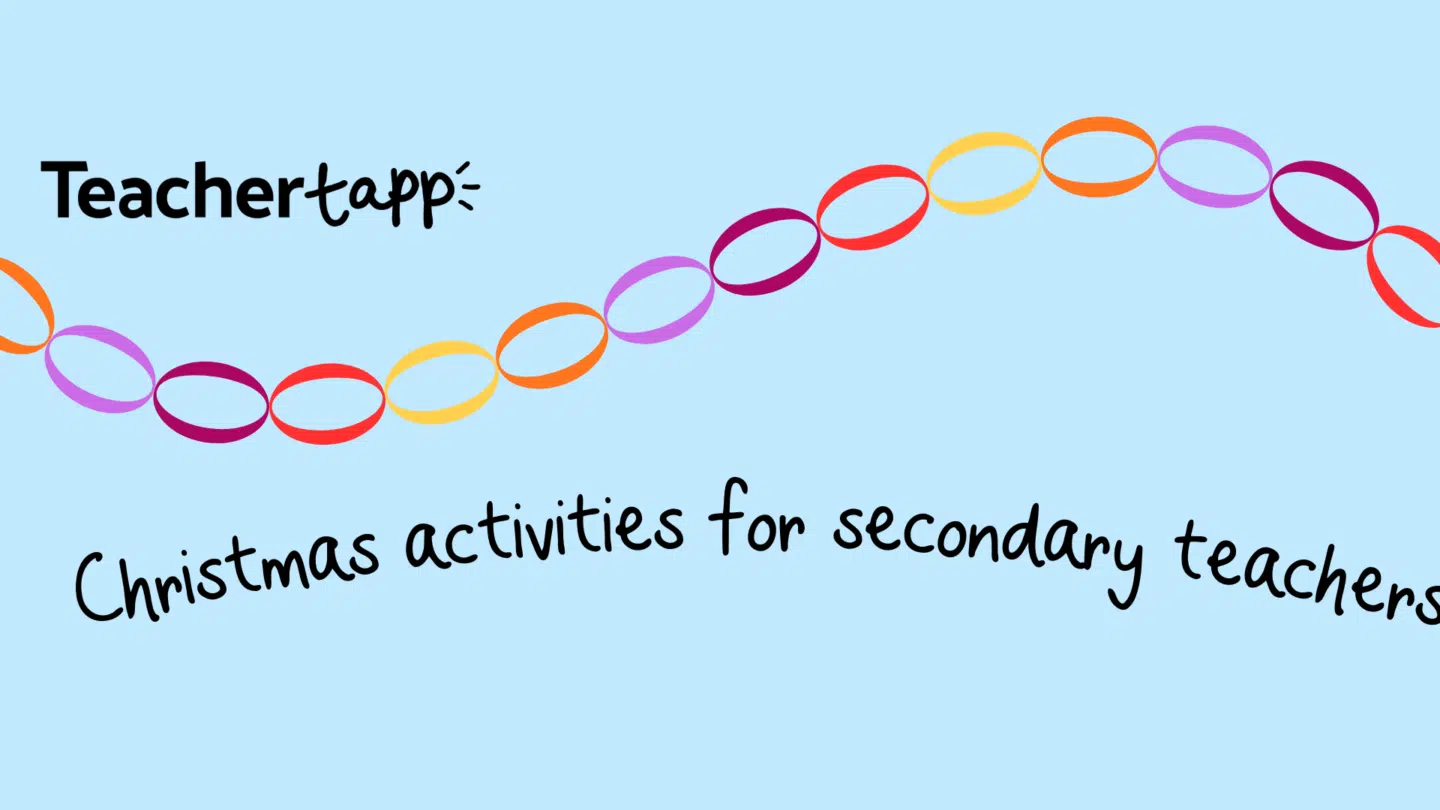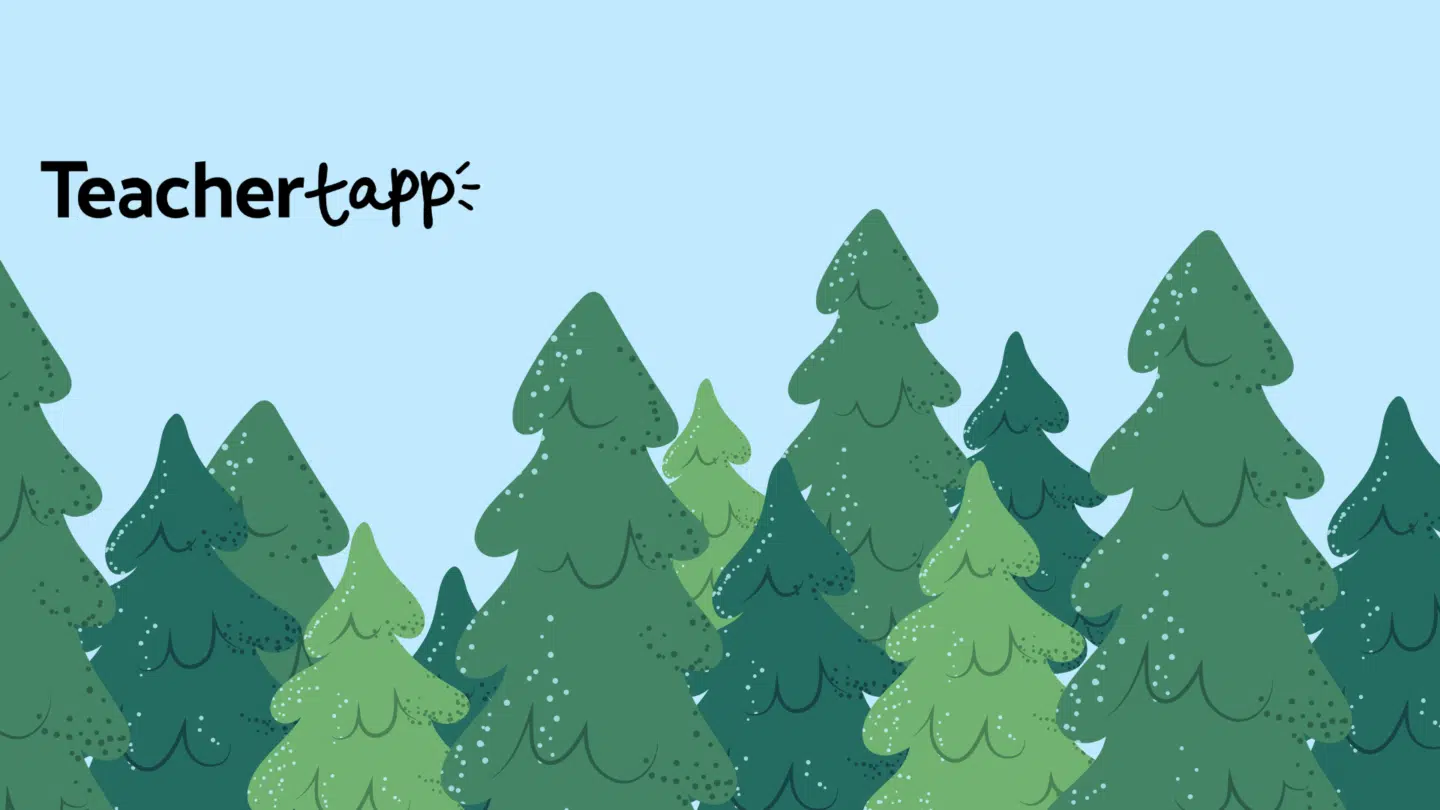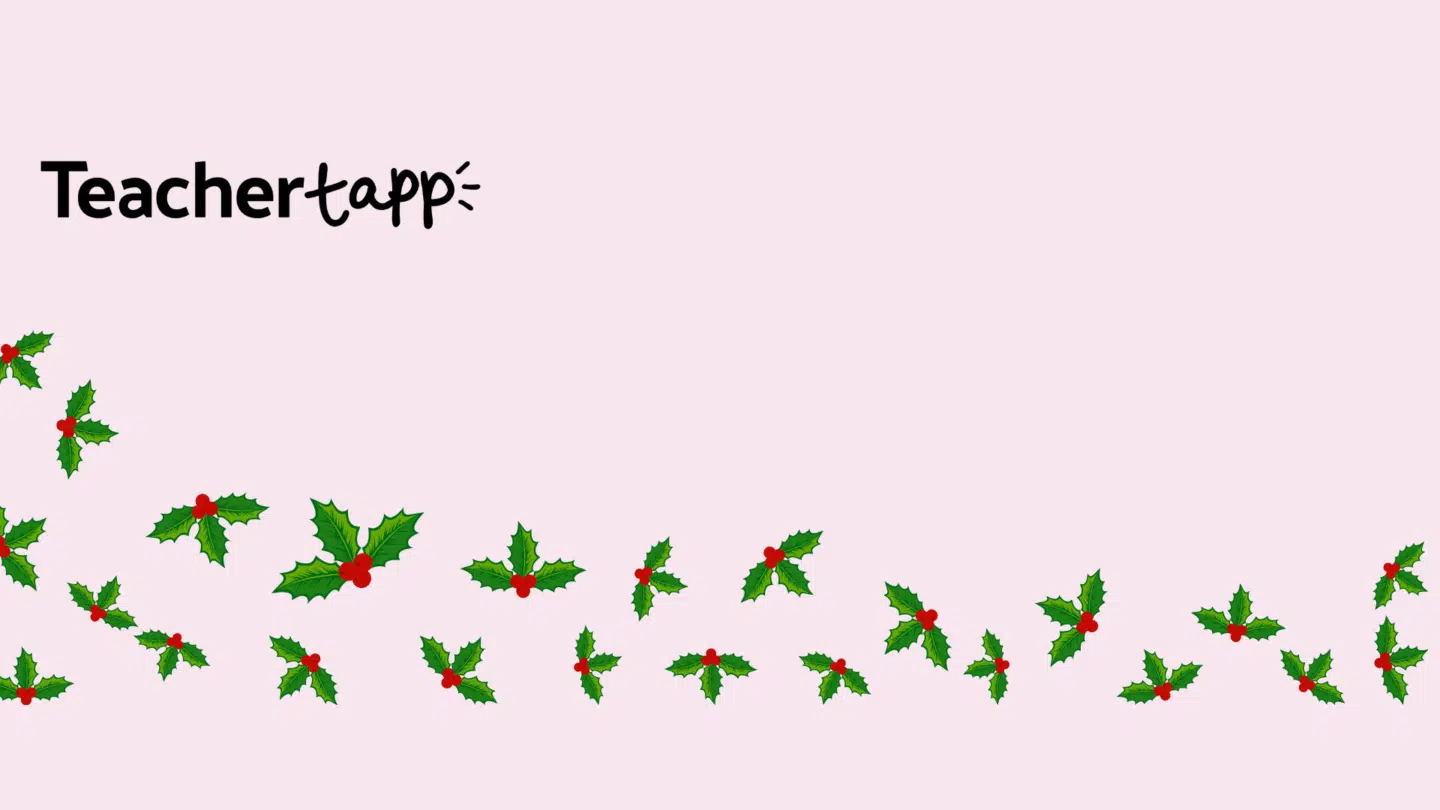
Hey there, Tappsters!
To those of you already on half-term (about 24%!), congratulations and enjoy! To the rest – hang in there – not much longer to go now.
Last week of the prize draw!
Time is running out! There are just days left of the October prize draw – how many tickets have you already collected?
Between Tuesday 7th and 31st October, for every TEN questions answered Tappers will be awarded a ticket in the draw. On the 1st of November, TEN Teacher Tappers will be drawn and be sent £100 gift cards.
To be in with a chance to win, all you have to do is tapp! Good luck!
6-7 facts about slang
They’re calling it out in maths. It’s made turning to page 67 impossibly difficult. And Tappers even wrote in to report students requesting 67 painted on their faces for their end of term disco.
It won’t surprise you to hear that it came out top of the slang-chart. 79% of secondary and 71% of primary teachers reporting they heard students using it this week.
The difference between primary and secondary? Secondary teachers report use more of the same words — but every single word appeared in both!
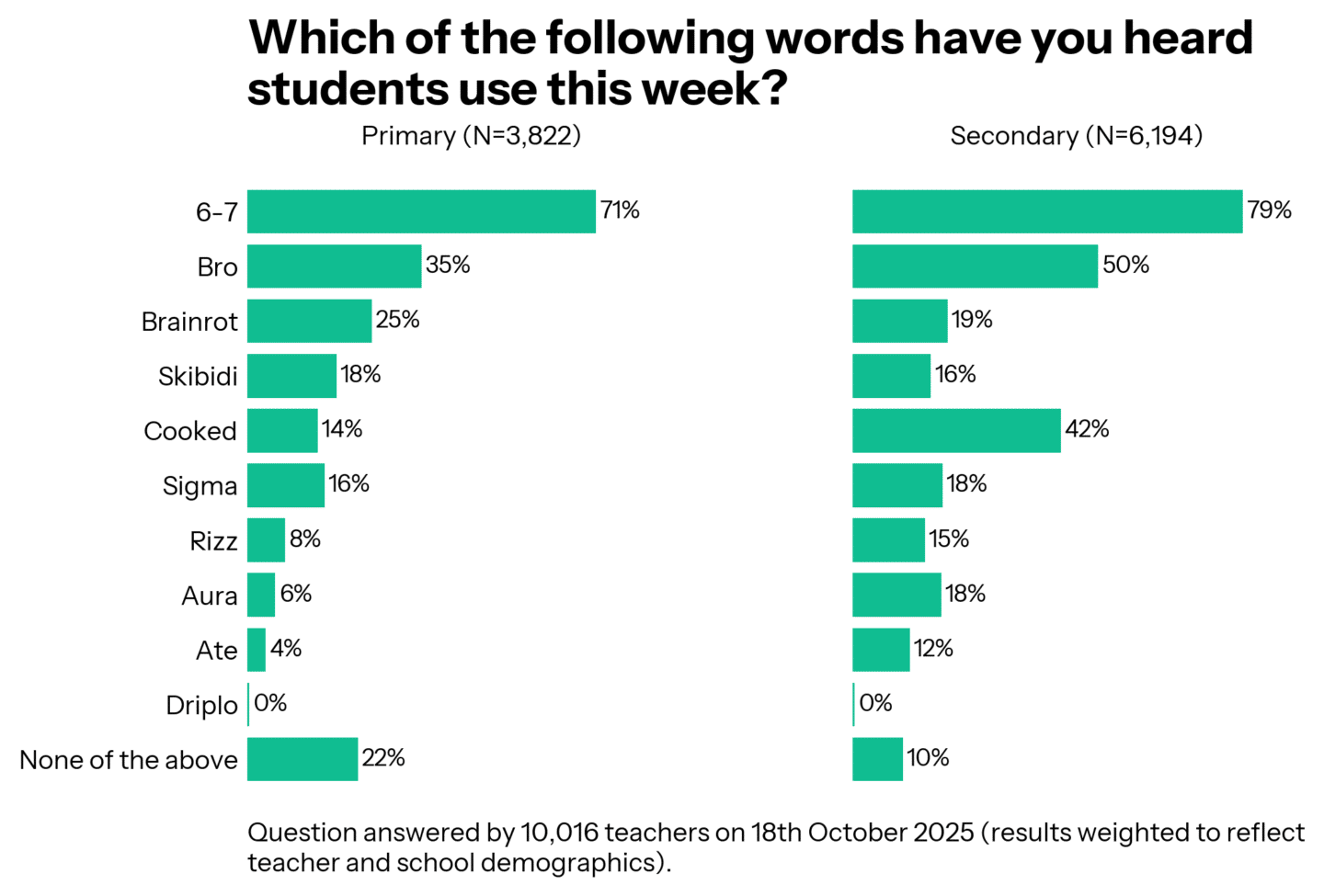
Some teachers do escape the 6-7 nightmare. EYFS/KS1 teachers were the least likely to report that they heard slang words on the list (42% said they heard no slang at all). And (perhaps unsurprisingly!) maths teachers reported the highest incidences of hearing 6-7 (86% vs 51% in EYFS/KS1).
The eagle-eyed among you might have noticed a curious word in the list — “driplo.” 🤔 What is driplo? Well… it isn’t real! We made it up — and for two good reasons.
First, it acted as an attention check — a way to make sure people were reading carefully and not just ticking boxes. Second, it served as a social desirability check. When it comes to slang, there can be a temptation to say you’ve heard more words than you really have (no one wants to feel out of the loop!). By slipping in a made-up word, we could see whether that happened and set a kind of “baseline” for the other answers.
The verdict? 0% ticked “driplo.” 🎉
So, well done — you passed both tests with flying colours!
PE in primary
From words students say, to the work they do! According to Department for Education guidance, primary students should have two hours of PE every week. But how many timetables aim to deliver two hours? And in practice, is it normal to complete the timetabled hours?
In private schools, students receive far more hours of PE, with 46% reporting they timetable 2.5+ hours of PE a week, compared to 1% of state schools.
56% of state schools timetable 2 hours of PE, with 19% committing to 90 minutes, 17% an hour and 7% less than an hour.

Are they getting the hours allocated? Just looking at state schools, when we compare the timetabled time to the real number of hours doing PE, we found more than a quarter of those who are timetabled to have at least two hours had their time cut short (29%).
And even those schools where PE is timetabled under the recommended amount aren’t fulfilling their PE quota with 24% delivering an hour or less in schools planning to do 90 minutes.
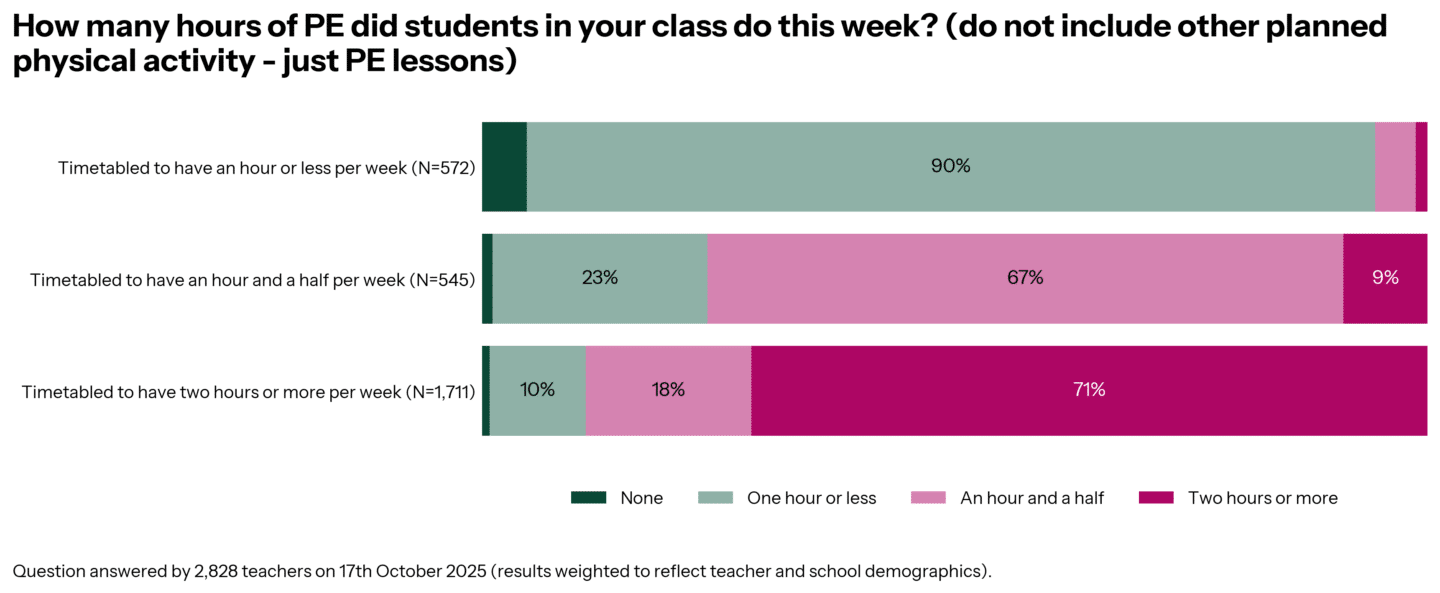
What are the obstacles to PE getting its full allocation? What else should we ask about PE? Use the app and get in touch – go to settings > contact us and drop us a note to tell us what to ask next!
AI shy?
Last week we reported a BIG increase in teachers using AI – but how many schools have AI policies in place for staff to follow?
22% of primary teachers and 32% of secondary teachers report having a policy in place – but not everyone who has one has read it (7% of primary and 11% of secondary) and some don’t know if they have one or not (13% primary and 17% secondary).
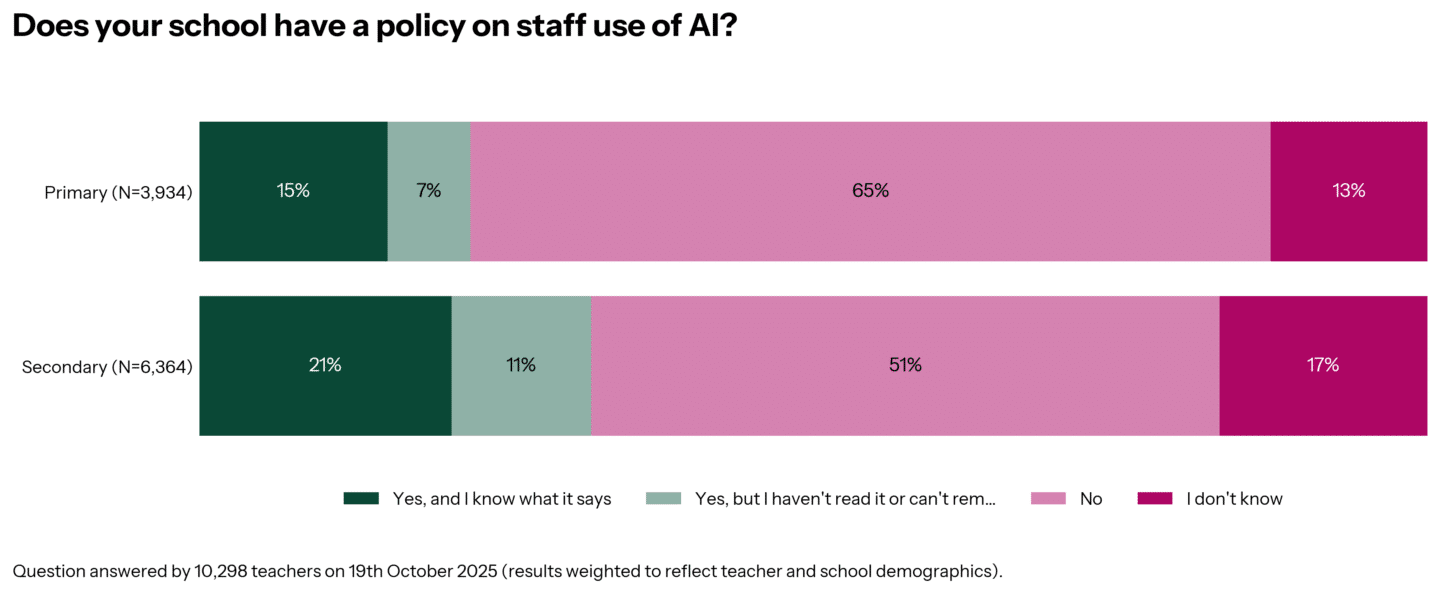
And are teachers AI shy when it comes to discussing how they’re using it for their school work? Apparently not! Overwhelmingly, teachers described themselves as “completely” or “somewhat” comfortable (87% primary and secondary).
What we can see is that the more you use AI, the more comfortable you feel talking about it with colleagues! There is a similar pattern when comparing teachers in schools with an AI policy they have read to those in schools where they are unsure if there is an AI policy (74% vs 53% describe themselves as “completely comfortable”).
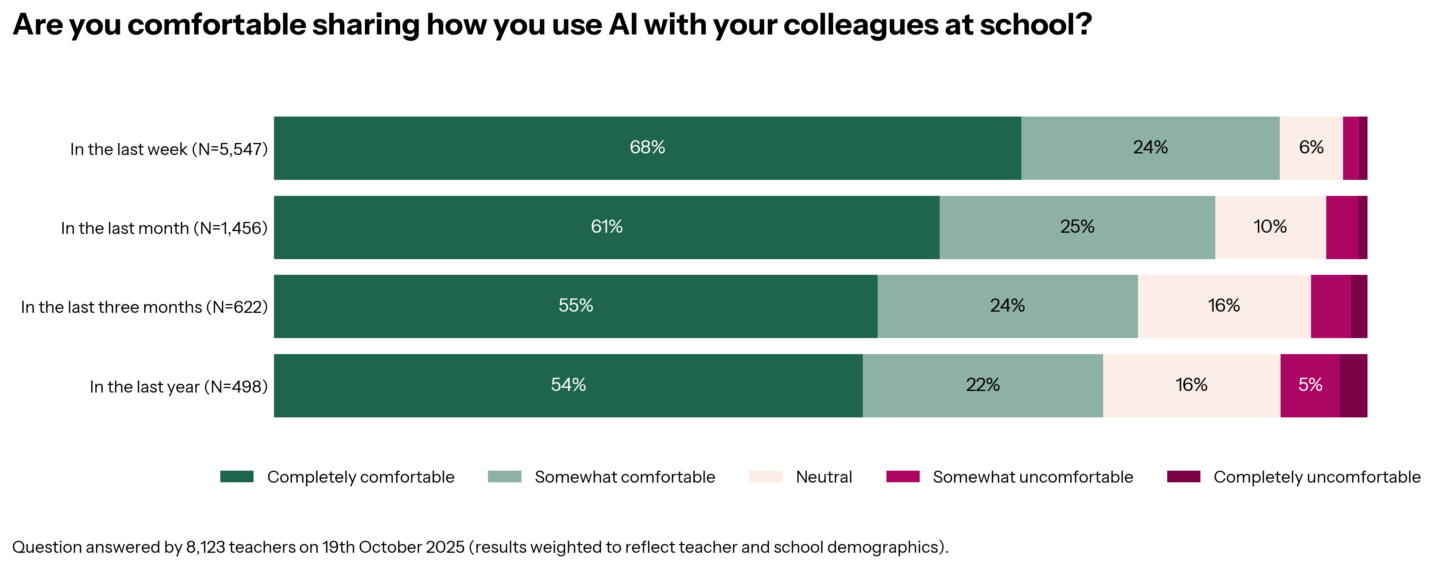
What are the key takeaways for leaders? Number one must be: communicate your AI policy clearly! Staff will be using AI, and it is sensible to provide guidance on what you do (and don’t!) want it used for.
Most common reasons for sanctions
Judging by responses to the questions on sanctions, there were lots of lost behaviour points on Friday 😱. Minor misbehaviours were common (58% in primary, 49% in secondary) as were major misbehaviours (18% primary, 13% secondary).
However, there were a number who did experience misbehaving students, but didn’t sanction out of fear this could make it worse (2% in primary and secondary). This rose when we looked just at ECTs (3%), revealing some of the additional challenges newer teachers face.
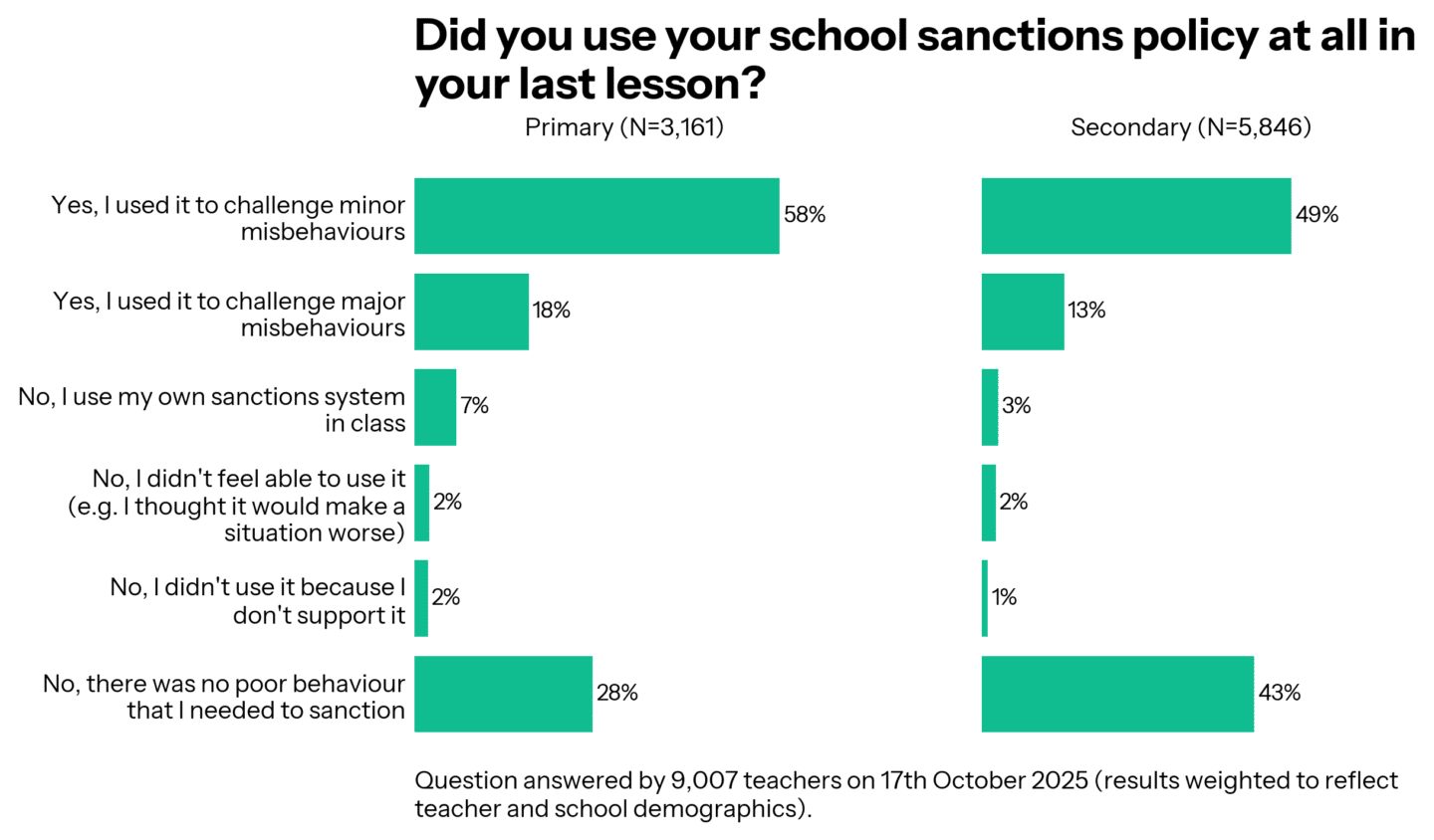
But what were the reasons behind the sanctions? Distracting others comes out number one! It was the reason behind 53% of the sanctions in primary, and secondary!
Refusing to follow instructions was the next most common reason (44% primary, 38% secondary), shouting at comes in third (37% in primary, 28% secondary).
Where do we see differences? Violence towards other students is far more common in primary (19% primary vs 4% secondary), as was violence towards staff (7% primary vs 2% secondary). Late homework, late to lessons and mobile phones were all, predictably, secondary-centric problems.

And is this misbehaviour different to previous years? So far, no. The responses in 2024 and 2025 are almost completely identical!
+ BONUS teachers with colds 🤧
A Teacher Tapper wrote in, keen to know if his back-to-school bug was as common as the, um, common cold.
And he was quite correct – LOADS of you have been sneezing your way through September and October. 80% reporting they have caught one (or more!) colds since being back at school.
That’s an awful lot of tissues and lemon drinks being used!
Daily Reads
Lots of reading was done this week – but the article that caught the attention of Teacher Tappers was the one from the EEF on mobile phone notifications and student attendance! 14% of Tappers clicked and read it last week.
School leaders had a different favourite: FFT reported on the number of students severely absent (clearly attendance is a pressing issue in schools at the moment!) with 12% reading.
Got a blog you think we should feature? Email us at england@teachertapp.co.uk and we will check it out!
